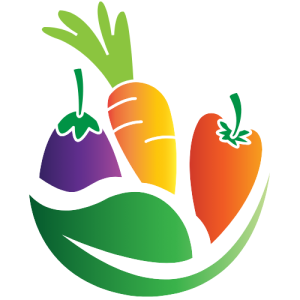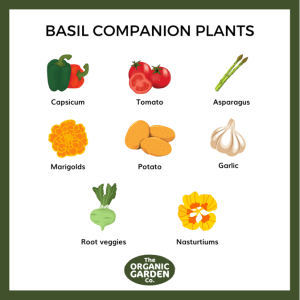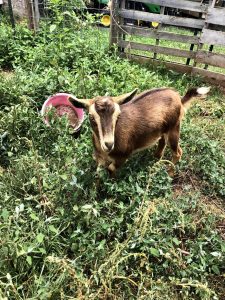The Year of the Tomato celebrates this versatile and nutritious fruit. It highlights its culinary and agricultural significance.
Tomatoes are a staple in kitchens worldwide. Rich in vitamins A and C, they offer numerous health benefits. Their vibrant red color and tangy flavor enhance countless dishes, from salads to sauces. The Year of the Tomato aims to raise awareness about sustainable cultivation practices.
It encourages gardeners and farmers to grow tomatoes more efficiently. This celebration also promotes the culinary diversity of tomatoes. From heirloom varieties to modern hybrids, there’s a tomato for every taste.
Whether you’re a home cook or a professional chef, tomatoes are essential in your culinary toolkit. Embrace the Year of the Tomato and discover new ways to enjoy this beloved fruit.

Credit: www.reddit.com
Choosing The Right Tomato Varieties
Choosing the right tomato varieties is crucial for a bountiful harvest. With so many types available, making the best choice can be daunting. This guide will help you understand the differences and select the perfect tomatoes for your garden.
Heirloom Vs Hybrid
Heirloom tomatoes are open-pollinated and have been passed down through generations. They offer unique flavors and colors. These tomatoes are often more flavorful but may have less disease resistance.
Hybrid tomatoes are bred for specific traits like disease resistance and uniformity. They generally produce higher yields. While they may lack the unique flavors of heirlooms, they are easier to grow for beginners.
Determinate Vs Indeterminate
Determinate tomatoes grow to a specific height and stop. They produce fruit all at once. These are ideal for canning and preserving because of their concentrated harvest.
Indeterminate tomatoes continue to grow and produce fruit throughout the season. They are perfect for fresh eating over a long period. These require more support due to their continuous growth.
| Type | Characteristics | Best For |
|---|---|---|
| Heirloom | Unique flavors, open-pollinated | Flavor enthusiasts |
| Hybrid | Disease-resistant, uniform size | Beginner gardeners |
| Determinate | Compact, one-time harvest | Canning and preserving |
| Indeterminate | Continuous growth, long harvest | Fresh eating |
Consider your needs and garden space before choosing. Whether you prefer the rich flavors of heirlooms or the reliability of hybrids, there’s a tomato variety for everyone.

Credit: www.reddit.com
Preparing Your Garden Soil
As we celebrate the Year Of The Tomato, preparing your garden soil is crucial. Healthy soil ensures robust tomato plants and abundant harvests. Follow these steps to get your garden ready for planting.
Soil Testing
Start by testing your soil. This helps you understand its current state. You can use a soil test kit from a garden center. Soil testing checks pH levels and nutrient content. Aim for a pH between 6.0 and 6.8 for tomatoes.
Here’s a simple way to test your soil:
- Collect soil samples from different parts of your garden.
- Mix the samples in a clean container.
- Follow the instructions on your soil test kit.
Once you have your results, you’ll know what your soil needs.
Organic Amendments
Next, improve your soil with organic amendments. These add nutrients and improve soil structure. Common organic amendments include compost, manure, and cover crops.
Here are some effective organic amendments:
- Compost: Adds nutrients and improves soil texture.
- Manure: Provides nitrogen, essential for plant growth.
- Cover Crops: Protect soil and add organic matter.
Work these into your soil about two weeks before planting. This gives the amendments time to integrate.
Prepare your garden soil well for a bountiful tomato harvest this year.
Planting Tomatoes
Tomatoes are a favorite among gardeners. They are easy to grow and very rewarding. Whether you’re a beginner or an experienced gardener, planting tomatoes is a fun and fruitful activity. Below, we will guide you through the essential steps of planting tomatoes. Let’s start with seed starting and then move to transplanting.
Seed Starting
Starting seeds indoors is the first step in planting tomatoes. This gives the plants a head start. Follow these steps:
- Choose a good quality seed starting mix.
- Fill seed trays with the mix.
- Sow the seeds about 1/4 inch deep.
- Water the soil gently to keep it moist.
- Place the trays in a warm spot, around 70°F to 75°F.
Once the seeds germinate, place the trays under grow lights. Keep the lights about 2 inches above the seedlings. This prevents them from getting leggy. Rotate the trays daily to ensure even growth.
Transplanting
Transplanting is the next crucial step. This usually happens after the last frost date. Follow these steps for successful transplanting:
- Harden off the seedlings by placing them outside for a few hours each day.
- Gradually increase the time they spend outside over a week.
- Choose a sunny spot in your garden.
- Dig holes about 18 to 24 inches apart.
- Place each seedling in a hole, burying the stem up to the first set of leaves.
- Fill the holes with soil and water well.
Staking or caging the plants will support their growth. Water the plants regularly, keeping the soil moist but not soggy.
By following these steps, you will have a successful tomato planting experience. Happy gardening!
Watering Techniques
Proper watering techniques are crucial for a bountiful tomato harvest. The right methods can boost growth and prevent diseases. Below are effective techniques to ensure your tomato plants thrive.
Drip Irrigation
Drip irrigation is an efficient way to water your tomato plants. This system delivers water directly to the roots. It minimizes water waste and prevents overwatering. Here are the benefits:
- Reduces water evaporation
- Prevents soil erosion
- Minimizes risk of disease
Install a drip irrigation system and set a timer. This ensures consistent watering. Adjust the flow to match your plants’ needs. Drip irrigation is especially useful in hot climates.
Mulching
Mulching helps retain soil moisture and reduces weed growth. It also keeps the soil temperature stable. Here are some popular mulching materials:
| Material | Benefits |
|---|---|
| Straw | Good insulation, decomposes slowly |
| Wood Chips | Long-lasting, prevents weeds |
| Grass Clippings | High in nutrients, quick to decompose |
Apply a 2-3 inch layer of mulch around your plants. Ensure the mulch does not touch the stems directly. This prevents rot and keeps pests away.
Mulching combined with drip irrigation can maximize your tomato yield. Both methods are easy to implement and highly effective.
Nutrient Management
In the Year of the Tomato, proper nutrient management is essential. Healthy tomatoes need balanced nutrients for optimal growth and yield. Below, we explore fertilization and composting to boost your tomato plants.
Fertilization
Tomatoes are heavy feeders. They need a steady supply of nutrients. Use a balanced fertilizer with equal parts nitrogen, phosphorus, and potassium. A common ratio is 10-10-10. Apply fertilizer at planting time and every 4-6 weeks.
| Stage | Fertilizer Ratio | Frequency |
|---|---|---|
| Planting | 10-10-10 | Once |
| Growth | 10-10-10 | Every 4-6 weeks |
Too much nitrogen can lead to leafy plants with few fruits. Balance is key. For organic options, use bone meal for phosphorus and blood meal for nitrogen. Monitor plant health and adjust as needed.
Composting
Composting enriches the soil. It provides essential nutrients for tomatoes. Start a compost pile with kitchen scraps and yard waste. Include vegetable peels, fruit scraps, leaves, and grass clippings. Avoid meat, dairy, and oily foods.
- Layer brown and green materials.
- Keep the compost moist but not soggy.
- Turn the pile every few weeks.
Finished compost should be dark and crumbly. Mix it into the soil before planting. It improves soil structure and retains moisture. Composting reduces the need for chemical fertilizers. Plus, it’s eco-friendly!
Pruning And Staking
Welcome to the Year Of The Tomato! In this section, we’ll explore the importance of pruning and staking your tomato plants. These techniques not only help in managing the growth of your plants but also enhance the quality and quantity of your tomatoes.
Pruning Techniques
Pruning is essential for healthy tomato plants. By removing unnecessary leaves and stems, you allow the plant to focus its energy on producing fruit.
- Sucker Removal: Pinch off small shoots that form in the leaf axils.
- Lower Leaf Removal: Cut off the leaves near the base to prevent disease.
- Top Pruning: Trim the top of the plant to control its height.
Using these pruning techniques will help your tomato plants grow stronger and healthier.
Support Systems
Supporting your tomato plants is crucial for keeping them upright and preventing damage.
| Support Type | Benefits |
|---|---|
| Stakes | Simple and effective. Keeps plants upright. |
| Cages | Provides full support. Ideal for larger plants. |
| Trellises | Perfect for small spaces. Supports vertical growth. |
Choose the right support system based on your garden space and plant size. This ensures your tomatoes grow healthy and abundant.
Pest And Disease Control
Tomatoes are delicious, but they attract pests and diseases. Controlling these is crucial for a healthy harvest. Let’s explore common pests and how to prevent diseases in your tomato garden.
Common Pests
Tomatoes face many pests. Here are some common ones:
- Aphids: These tiny insects suck sap from tomato plants. They cause leaves to yellow and curl. Use insecticidal soap to control them.
- Tomato Hornworms: These large green caterpillars chew leaves and fruits. Handpick them to protect your plants.
- Whiteflies: These small, white insects feed on the undersides of leaves. They spread diseases. Sticky traps can help reduce their numbers.
- Spider Mites: These pests cause tiny yellow spots on leaves. Use miticides or insecticidal soap to control them.
Disease Prevention
Tomato plants are prone to various diseases. Prevention is key. Follow these tips:
- Rotate Crops: Don’t plant tomatoes in the same spot each year. This prevents soil-borne diseases.
- Water Properly: Water at the base of the plant. Avoid wetting leaves to prevent fungal diseases.
- Prune Regularly: Remove lower leaves to improve air circulation. This reduces the risk of disease.
- Use Resistant Varieties: Choose tomato varieties resistant to common diseases. This adds an extra layer of protection.
- Keep Garden Clean: Remove plant debris. This prevents pests and diseases from overwintering.
By following these tips, you can keep your tomato plants healthy and productive throughout the growing season.

Credit: www.rogersgardens.com
Harvesting And Storing Tomatoes
Tomatoes are a garden favorite for many. Knowing when and how to harvest them is key. Proper storage ensures you enjoy fresh tomatoes longer.
When To Harvest
Tomatoes are ready when they turn bright red. Check daily during peak season. Gently squeeze to test ripeness. They should feel firm but not hard.
Pick tomatoes in the morning. The temperature is cooler then. Use a sharp knife or scissors to avoid damage.
Storage Methods
Proper storage keeps tomatoes fresh longer. Here are some methods:
- Room Temperature: Store ripe tomatoes at room temperature. Place them stem-side down.
- Refrigeration: Only refrigerate fully ripe tomatoes. Use within a week for best flavor.
- Freezing: Freeze tomatoes for long-term storage. Blanch and peel them first.
Here is a table summarizing the methods:
| Storage Method | Duration | Notes |
|---|---|---|
| Room Temperature | 1-2 weeks | Best for unripe or semi-ripe tomatoes. |
| Refrigeration | Up to 1 week | Only for fully ripe tomatoes. |
| Freezing | 6-8 months | Blanch and peel before freezing. |
Frequently Asked Questions
What Is The Tomato mania Tomato Of The Year 2024?
The Tomatomania Tomato of the Year 2024 is the ‘Pink Berkeley Tie Dye’ tomato. It features vibrant colors and rich flavor.
In What Year Was The Tomato Confirmed As An Arkansas State Symbol?
The tomato was confirmed as an Arkansas state symbol in 1987. This unique designation highlights the importance of tomatoes in Arkansas agriculture.
What Year Did Tomatoes Come To America?
Tomatoes came to America in the early 16th century, around 1519, brought by Spanish explorers.
How Old Is The Tomato?
Tomatoes originated in western South America around 2,500 years ago. They were domesticated by indigenous peoples.
Conclusion
The Year of the Tomato has shown us the versatility of this beloved fruit. From salads to sauces, tomatoes elevate every dish. Embrace the health benefits and culinary potential of tomatoes. Grow your own or explore local markets. Celebrate the tomato and enjoy its vibrant flavors all year round.





